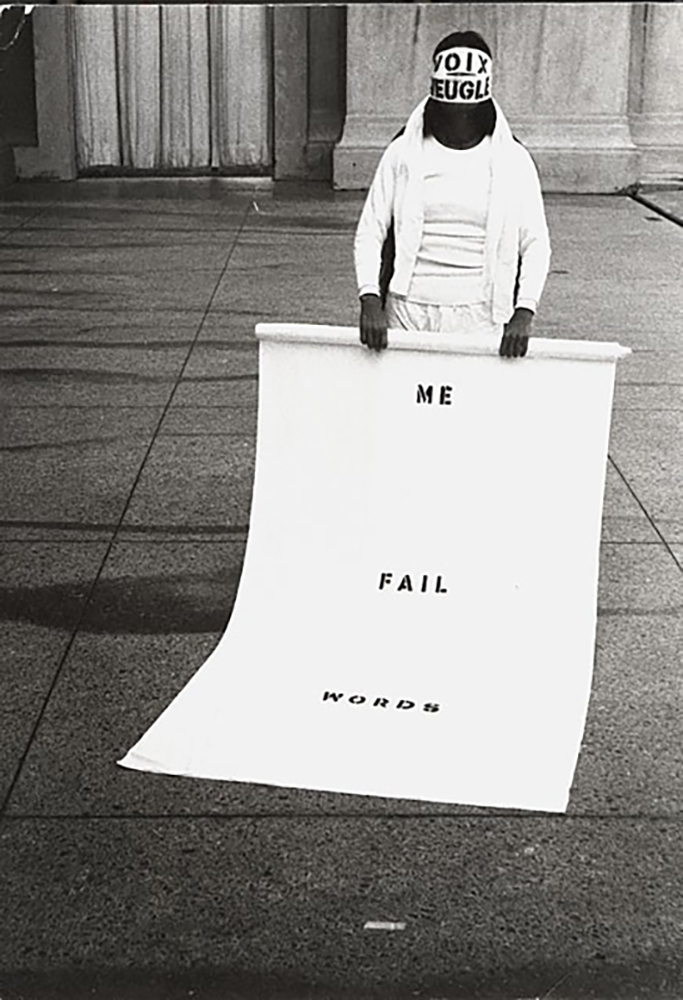In (re)reading an experimental novel, Adam Thirlwell finds a productive gap between utterance and meaning

I always like trying to map mutual escape routes between the artworld and the world of literature. Lately I’ve been reading and rereading Theresa Hak Kyung Cha’s DICTEE (1982), a book that is also an artwork. But how to describe this work to someone who does not know it? I can hardly describe it to myself. It’s about gender and colonial war and therefore multiple processes of subjugation, but what maybe makes it unique is the way it operates in more than one language, just as it uses more than one medium. It’s a text that is all about (or maybe partly about) voice and how voice can be represented. And the method it likes to use is translation.
This title DICTEE in one sense comes from dictation, and the text opens – or at least almost opens, after an image of scribbled or scraped characters, and a page with some lines from Sappho and another page with a list of the classical muses – with what looks like a passage of dictation, first in French, then in English. So this strange word ‘DICTEE’, if read as a French word, could be understood first to mean the practice of dictation, but also increasingly to mean a woman who is spoken, who does not speak as herself. Or if it is an English word then this gender is no longer present and the word would become anyone who is dictated to, a universal dictee, but this seems less likely given how important gender is to this novel/poem, just as it’s important that the first subtitle or chapter title we come across is the equally strange word ‘DISEUSE’, a French word for a woman who speaks. But at the same time, however much a French meaning might be the primary meaning, English meanings can’t be repressed – as if diseuse is really a strangely misspelled version of either disuse or disease.
DICTEE is a text that oscillates between languages – sometimes within a single word but also sometimes using mirrored sequences. It exists in a continual state of uncertain translation. Some sections develop the opening model of dictation exercises and alternate French and English on facing pages, as if the two are equivalent, except that small phrases seem to escape that do not exist in the other language; other sections look like they are doing the same thing, until you realise that the text isn’t to be read across two pages but as a single unfurling thing, sometimes in English, sometimes in French, where the English will sometimes replicate earlier passages in French, but sometimes won’t, and then passages will also intervene in Korean and Chinese.
Biographically, this isn’t so surprising. Cha, who made performances and videos as well as texts before being horrifically murdered aged thirty-one, was born in South Korea during the Korean War; her family then moved to America when she was twelve. At high school she continued language learn- ing, becoming fluent in French. Her life was an example of how often and how contingently multiple languages inhabit a person – and sometimes also how violently: her parents grew up in Manchuria during the period of Japanese occupation, with the Japanese language imposed on them. In everything Cha did – whether performance or video or text – the presence of the viewer or the audience was made central but also problematic. In her texts this problem was often posed in the form of multilingual wordplay, so that the meaning for the reader seems to oscillate or puzzle.
Maybe this kind of puzzling is why translation feels so useful to me as a concept, for both writing and for art? It’s so moody, translation! I used to think that one beauty of translation was its way of demonstrating that meaning was only imperfectly embodied in a single work – that it proved the existence of some always-receding universal. But maybe the puzzling that happens in Cha’s DICTEE is more important, and demonstrates the opposite: the uniquely specific and opaque nature of our attempts to make meaning. Or in fact, both communication and the difficulty of communication are inextricable, which is why translation is so exciting. However familiar it might feel, it’s always constructing a bridge from its own materials, and is therefore always revealing limit cases: whether the translation is being done between two dominating languages, or between a coloniser and a colonised people, or between different species, or even between a human and a hypothetical alien.
Back in the mid-twentieth century, the philosopher W.V.O. Quine came up with a thought experiment: if an anthropologist were to encounter a people whose language she did not know and who did not know her language, how would she be able to give a meaning to the sounds ‘gavagai’, uttered by a speaker when seeing a rabbit emerge from some undergrowth. What I love about this scene is that really all of us continue to be both the anthropologist and the person saying ‘gavagai’. Translation is a practice that makes that gap visible at the same moment as it seems to dissolve it.
It’s like – just thinking about Cha’s word diseuse for a final moment – what Samuel Beckett once did with disease in a miniature translation he made of an aphorism by Nicolas Chamfort, an eighteenth-century writer. Beckett was translating three French sentences – ‘Vivre est une maladie dont le sommeil nous soulage toutes les seize heures. C’est un palliatif. La Mort est le remède.’ Which I guess could roughly be translated as: ‘Living is an illness relieved by sleep every 16 hours. It’s a temporary solution. Death is the cure.’ But this is Beckett’s inspired version, a poem of nine compacted words:
come ease
this life disease
Adam Thirlwell’s new novel, The Future Future, is out now